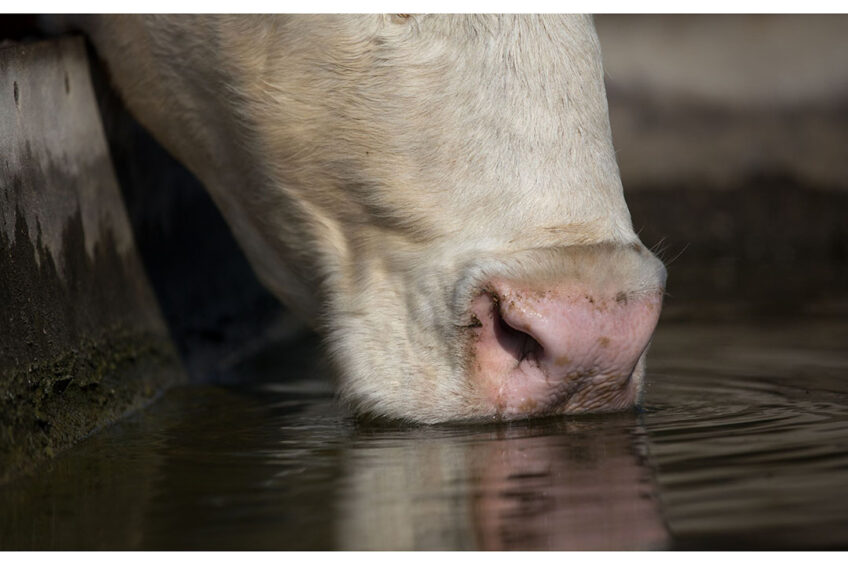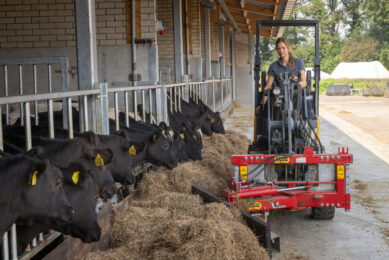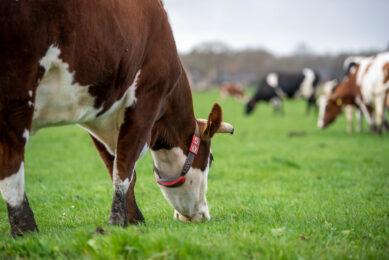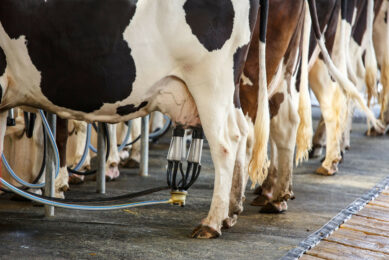Mitigation of heat stress in dairy cows gathers pace

Research into problems of heat stress in dairy cows is becoming increasingly important as Europe faces hotter summers. Here, a look at some of the latest work and areas where farmers can take action.
Record-breaking temperatures across the UK last summer because of climate change have prompted a £1.24 million study into mitigating the problem of dairy cow heat stress. The multidisciplinary study will look to overcome the problem which reduces yield, fertility, immune system functions and overall cow welfare.
Researchers are looking to understand the interactions of ambient temperatures, building microclimates, cow physiological processes and changes in cow behaviour. Ultimately, episodes of heat stress will continue to affect animal welfare and milk yield if they are not addressed through changes in practice. Rising temperatures caused by climate change are going to compound the problem, according to experts.
The collaboration involves teams from the universities of Reading, Cardiff, Essex and Writtle University College, with funding coming from the Biotechnology and Biological Sciences Research Council. The multi-disciplinary nature of the project means that research encompasses animal and dairy sciences, mathematics and built environment engineering.
Chris Reynolds, professor of animal and dairy sciences at the University of Reading, said: “Heat stress due to climate change could have severe negative consequences for the health and productivity of dairy cows. Lactating cows have a high rate of metabolism, which makes them less tolerant of high temperatures.
“Research is essential to inform and shape future cow management strategies and building designs. We have to respond to the changing environment and through better understanding of how cows interact with building microclimates design housing and management systems that minimise heat stress and enable more sustainable dairy systems.”
The research will take place at the university’s Centre for Dairy Research (CEDAR) alongside 6 commercial farms across the UK. Individual cow behaviour will be tracked using technology that can give meaningful insights into movement pattern, activity and space use by herds. This will be combined with continuous sensor monitoring of barn microclimates to model and predict the complex interactions between cow behavioural choices and their housed environment.
Cows are known to adapt their behaviour to help cope with high temperatures and humidity. They may:
- Increase their intake of water
- Seek shade
- Look for areas of enhanced ventilation
- Exhibit other individual and social behavioural responses.
Professor Zhiwen Luo from the Welsh School of Architecture (WSA) said architects and designers had neglecting the housing needs of animals, prioritising housing for humans.
“However, as the impact of climate change threatens all living beings, it’s imperative to recognise the vulnerability of animals, especially their limited capacity to adapt to extreme weather conditions. With this in mind, our new project in WSA aims to design improved housing for dairy cattle in the UK, providing them with better protection against extreme heat and elevating their overall welfare,” said Leo.
Dairy cow housing and heat stress
Continuous sensor monitoring of barn microclimates (including temperature, humidity and air quality) and detailed ventilation surveys will also be obtained and combined with physiological data (body temperatures, production and health readings). This will enable detailed analysis of how indoor-housed dairy cows respond to, and cope with, heat stress over different time scales. The data collected will inform the development of housing designed to reduce heat stress and improve welfare.
The approach taken, using bespoke sensors from Omnisense and Smartbell, and modelling how building design influences housing microclimates and subsequently cow behaviour, has never been done before, so this is first-of-its-kind research.
The research consortium also has industry support from the Agriculture and Horticulture Development Board (AHDB), The Dairy Group, Etex, Innovation for Agriculture and Map of Ag, as well as Defra.
It comes at a time when ruminant specialists are urging farmers to think about heat stress ahead of the warmer weather to avoid production losses.
Speaking recently at the George Farm Vets Cow Convention, Nico Vreeburg, Lallemand’s ruminant technical support manager, warned that heat stress was becoming an ever-increasing issue.
“Production losses occur long before cows show any sign of heat stress. Drops in milk yields, poor fertility and increased health challenges such as lameness and ketosis can all been seen as a result of heat stress. Cows start to express signs of heat stress at 21°C (70°F) but losses start to occur as early as 18°C (64°F), said Vreeburg.
“With the hotter summers we have been experiencing, temperatures at this level are occurring much more frequently than in the past, so heat stress needs to be a fundamental part of any cow management plan.”
He said farmers needed to look at housing, nutrition and water access as starting points: “Cows spend 75% of their time inside, so it’s worth investing in good housing. Badly designed sheds could be 5°C hotter than the temperature outside. However, in a good shed, the temperature could be 5°C cooler.”
Cooling the cow barn
“Ventilation is a really important factor – there should be fresh air 24/7 in the barn. Cows also need access to a reliable source of fresh water as they will drink more in the heat.”
As an example, Vreeburg said a cow producing 21 litres of milk per day will drink 103 litres of water when the temperature is 21°C (70°F) and 109 litres of water when the temperature is 27°C (84°F). A cow producing 45 litres of milk a day will drink considerably more – 128 litres of water when the temperature is 21°C and 135 litres when the temperature is 27°C.
Insulating the roof and providing shade as well as cooling cows with sprinklers or vertical fans also formed part of Vreeburg’s recommendations: “If designing a new shed, white roofs can help keep the building cool.”
And he suggested that dairy farmers look closely at nutrition to limit a reduction in feed intake: “Forage management is key to optimising silage quality and stability at feed out. Cow dry matter intake declines when they’re suffering from heat stress and so it’s important that what they do eat is of high quality.”
He added that feeding a live yeast has also been shown to help mitigate the effects of heat stress.
Join 13,000+ subscribers
Subscribe to our newsletter to stay updated about all the need-to-know content in the dairy sector, two times a week.










